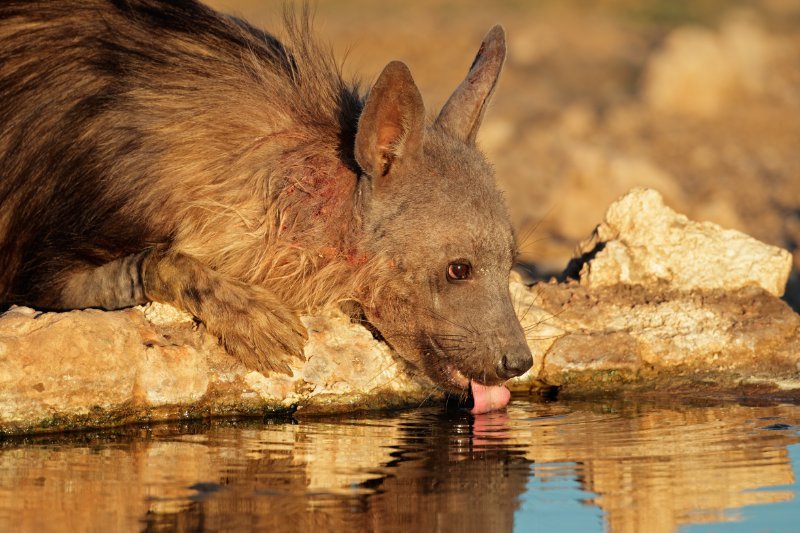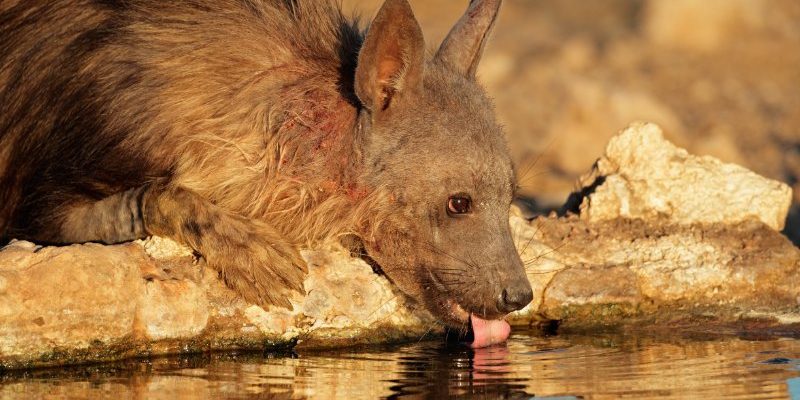
The brown hyena (Parahyaena brunnea) roams the arid regions of southern Africa, distinguishing itself with its shaggy, dark fur and impressive adaptability. They’re not just scavengers; they play an important role in their ecosystem. However, the question looms: Is the brown hyena endangered? Understanding their status can shed light on broader conservation efforts and our responsibility toward protecting these fascinating animals.
What Do We Know About Brown Hyenas?
Brown hyenas are fascinating creatures with a unique lifestyle. They are nocturnal scavengers, mostly active at night when they traverse their vast territories in search of food. Picture this: they hunt small animals, scavenge on carcasses, and sometimes even steal from other predators. Their strong jaws and teeth help them consume tough materials, like bones, which is a pretty cool adaptation in the wild.
These hyenas are social animals, often forming small groups called clans. Unlike their spotted counterparts, brown hyenas are less vocal and tend to communicate through body language. You might find them grooming each other or playing, which strengthens their bonds. Honestly, watching them interact can be really heartwarming, showing us just how complex their social structures are.
Another key aspect is their habitat. Brown hyenas primarily inhabit semi-desert and scrubland areas, which provide the necessary resources for their survival. However, as we’ll discuss, these habitats are disappearing or changing due to human activity, making it crucial to understand their environment and the challenges they face.
Are Brown Hyenas Endangered?
So, are brown hyenas endangered? The International Union for Conservation of Nature (IUCN) classifies them as “Near Threatened.” This means they’re not currently at the brink of extinction, but they’re definitely facing challenges that could push them into a more serious status if left unaddressed. You might be wondering what exactly puts them at risk.
Habitat destruction is one of the biggest threats. As agriculture expands and human settlements grow, these hyenas lose their homes. Imagine if you had to pack up and leave your neighborhood because it’s being replaced by a shopping mall. It’s tough for wildlife, and brown hyenas are no exception. They need spacious territories to thrive, and losing those spaces means losing their food sources.
Additionally, there’s the issue of poaching and hunting. Some people see these hyenas as nuisances or threats to livestock, leading to conflicts with humans. Sadly, some may resort to killing brown hyenas to protect their animals, further threatening their population.
Conservation Efforts for Brown Hyenas
Fortunately, there are various conservation efforts underway aimed at protecting brown hyenas. Organizations and wildlife groups are working tirelessly to raise awareness about the importance of this species. Little by little, they’re helping to create a more balanced ecosystem.
One effective strategy has been the establishment of protected areas, where these hyenas can roam freely without the threat of human encroachment. These reserves provide a safe haven and help maintain the natural prey populations that brown hyenas rely on. Imagine a safe park for your favorite pets where they can play without worry—that’s what these protected areas offer.
Education plays a huge role too. Conservationists are reaching out to local communities to explain the value of brown hyenas in the ecosystem. Teaching the importance of biodiversity can help shift perceptions and reduce conflicts. Picture community members learning how these animals contribute to a healthy environment; it’s a win-win for both wildlife and humans!
The Role of Brown Hyenas in Ecosystems
You might be surprised to learn that brown hyenas, as scavengers, are vital to their ecosystems. They help recycle nutrients by consuming dead animals, which might otherwise contribute to disease if left untouched. Think of them as nature’s clean-up crew, working behind the scenes to keep the environment healthy.
By eating carcasses, they prevent the spread of disease, benefiting other animals and even humans. This balance is crucial, especially in the fragile ecosystems of southern Africa. The absence of brown hyenas could lead to an overpopulation of certain species, disrupting the food chain. It’s a delicate balance, and each player in this game matters.
Additionally, their presence can encourage biodiversity. When brown hyenas hunt and scavenge, they create opportunities for other wildlife. For example, smaller predators might benefit from their leftovers. It’s nature working in harmony, and it shows just how interconnected everything truly is.
How You Can Help Brown Hyenas
While conservation organizations are doing great work, there’s also a role for you to play! Supporting local wildlife organizations can go a long way. Whether it’s donating, volunteering, or simply spreading awareness, every action counts. Even small contributions can make a big difference.
Consider learning more about the issues these creatures face and educating others. Share stories and facts about brown hyenas on social media to raise awareness. It’s not just about sharing cute animal photos; it’s about highlighting the challenges they encounter.
Lastly, choosing eco-friendly products and supporting sustainable practices can help protect the habitats of brown hyenas. You might be surprised how your everyday choices can contribute to the health of the environment. Every little bit helps!
Final Thoughts on Brown Hyena Conservation
In conclusion, while brown hyenas aren’t classified as endangered right now, they face serious threats that need attention. From habitat loss to human-wildlife conflict, their struggles remind us of the delicate balance in our ecosystems. By understanding their role and supporting conservation efforts, we can help ensure that these unique creatures continue to thrive.
So next time you hear about brown hyenas, remember they’re not just background characters in a wildlife documentary—they’re essential players in the grand scheme of nature. By advocating for their protection and raising awareness, we can help keep their ecological narrative alive for generations to come. Together, we can make a difference!

